Surface featuresKhumbu Glacier is typical of many Himalayan glaciers in having a snout almost totally covered by debris. This is derived mainly from rock avalanches, but some reaches the surface from the bed, possibly by thrusting, in zones of compressive flow, such as below the Khumbu Icefall. The debris has the effect of slowing down ablation, increasingly so towards the snout. This has the effect of lowering the surface gradient, and promoting the development of supraglacial ponds. When these coalesce, large unstable moraine-dammed lakes may form, posing a serious hazard to communities down-valley. This group of photographs shows the range of features found on the surface of the glacier and the tributaries that join (or joined) it. The photos are organized sequentially from the start of the debris-mantled area to the end moraine complex. |
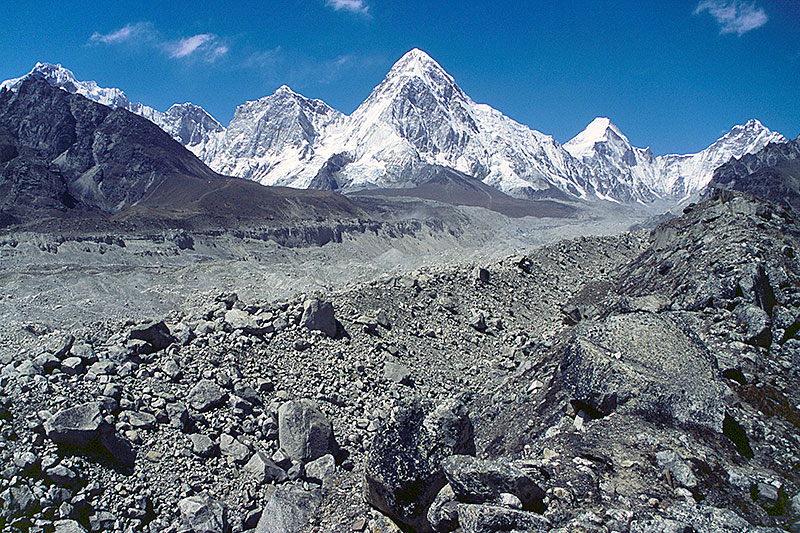 Overview of the main stretch of debris-mantled ice, looking from the left-lateral moraine to the peak of Pumori. | 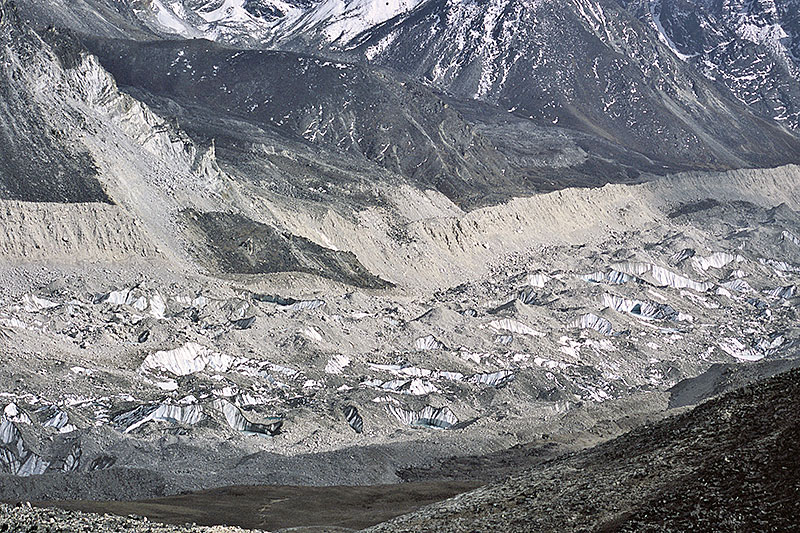 The middle reach of the glacier, looking towards the snout. Note the prominent trimline and collapsing Little Ice Age moraines. | 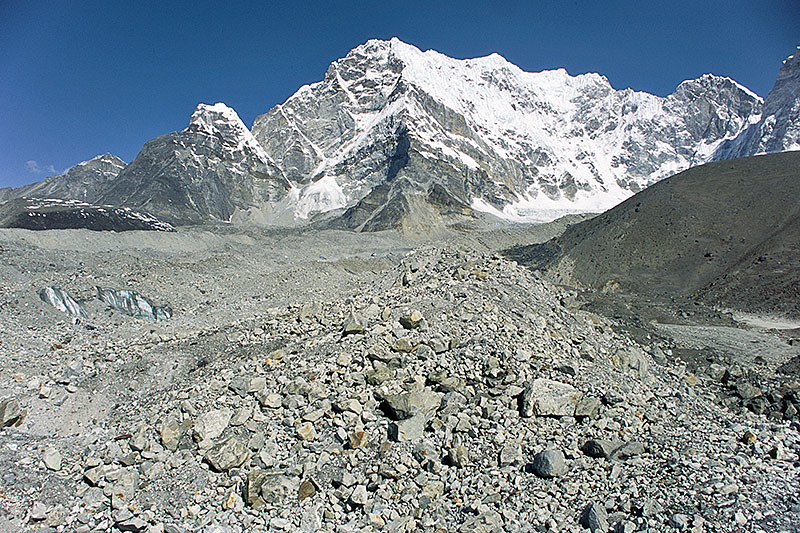 The lower part of Khumbu Glacierís largest tributary, Shangri Shar Glacier, with its several metre-thick mantle of debris. | 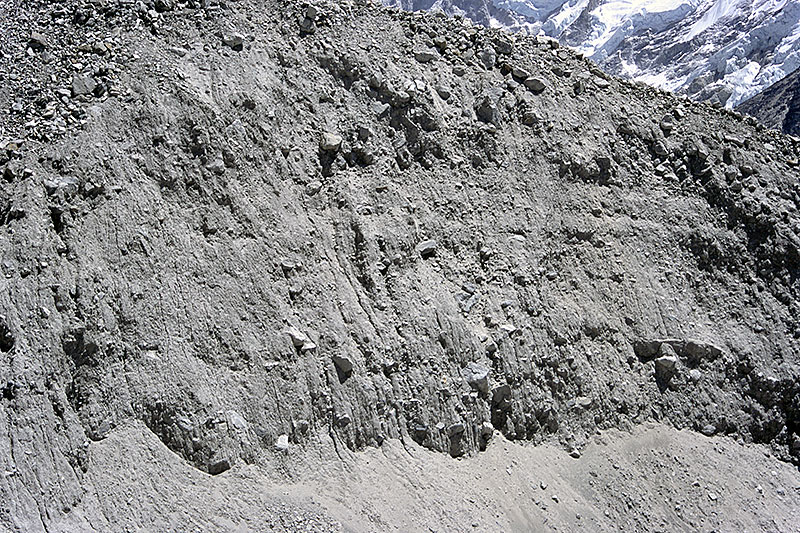 Thick bouldery gravel derived from rockfall on Shangri Shar Glacier. This stratified sequence is several metres thick and forms an unstable cliff. |
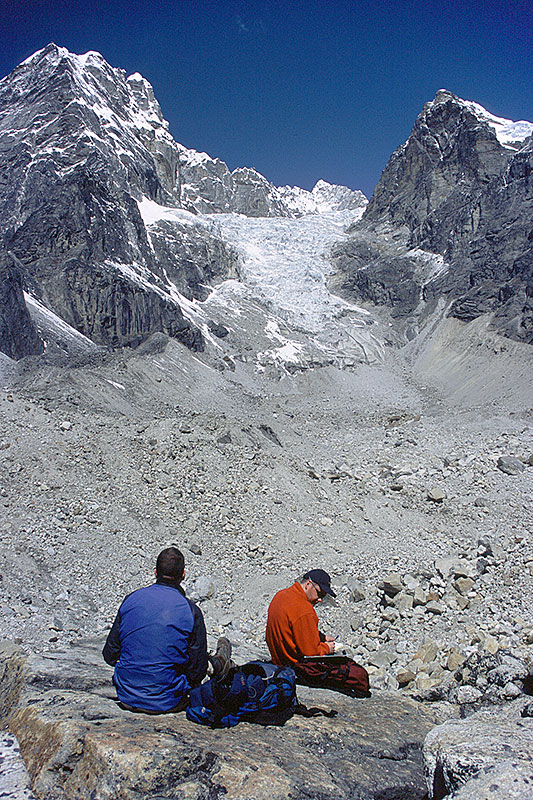 A small former tributary glacier on the west side of Khumbu Glacier has now ablated so much that inside its outer moraine a deep hollow of rubble has formed. | 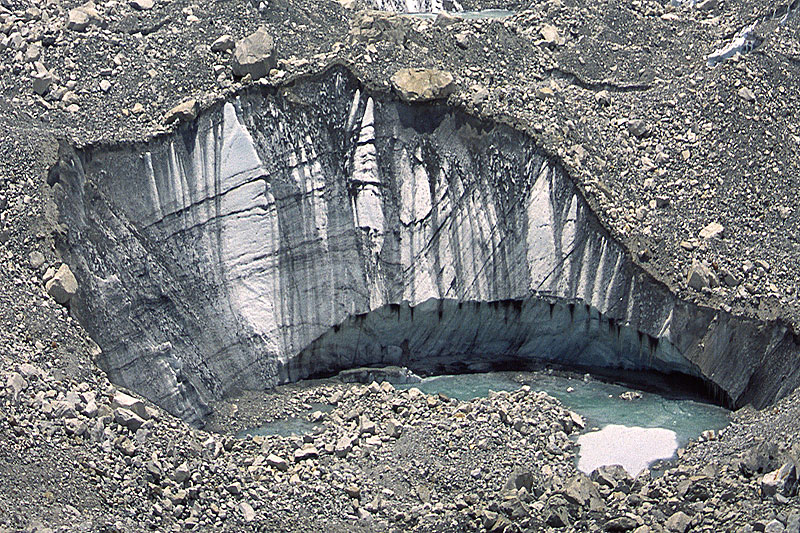 Ice cliffs, up to ten metres high, indicate that the debris cover over the whole glacier is little more than a couple of metres thick. The internal dark layers are from rock avalanches, which provide most of the debris cover. | 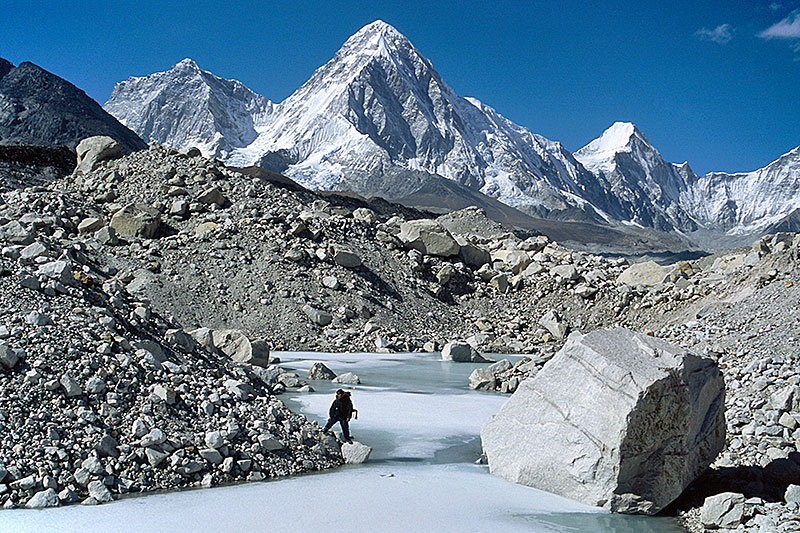 A frozen pond in the middle of Khumbu Glacier, which here has near-complete debris cover, including massive boulders. Pumori is in the background. | 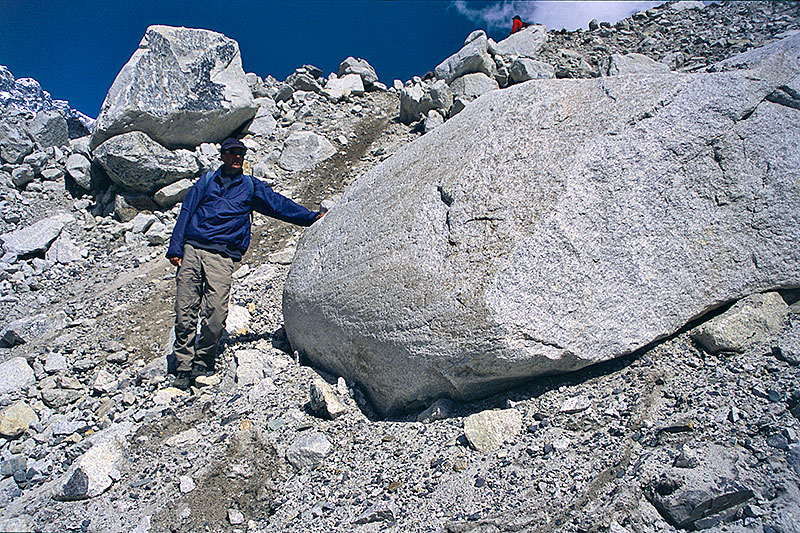 This large boulder is striated indicating that this has been derived from the glacier bed, although now lying on the surface. We believe that this boulder and the surrounding debris were uplifted by thrusting below the Icefall. |
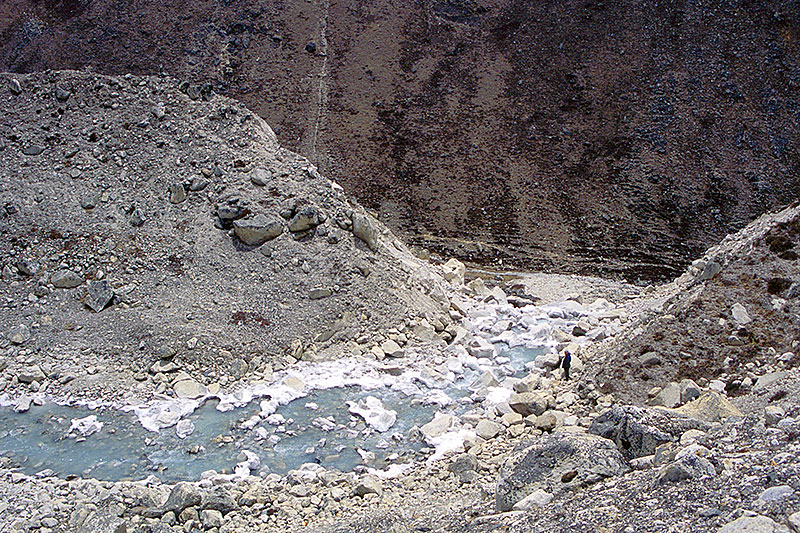 This breach in the left-lateral moraine of Khumbu Glacier, is the main discharge route for surface drainage on the glacier. | 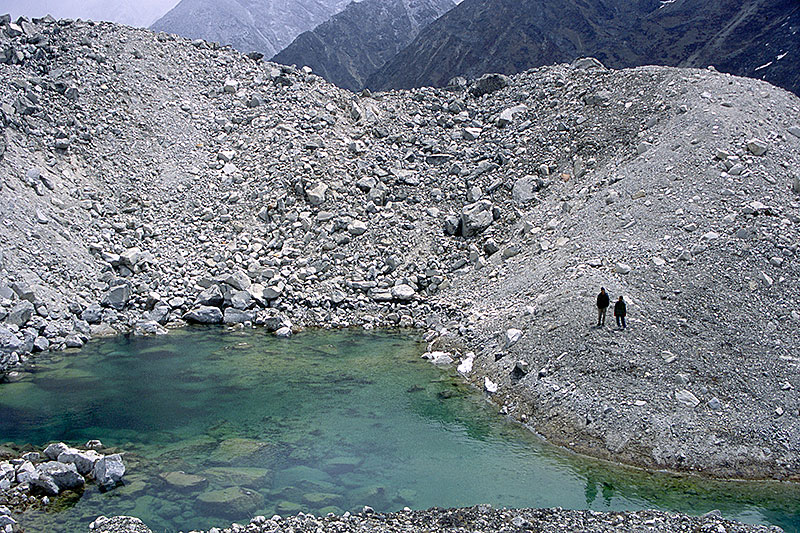 The end moraine, which merges with the lateral moraines, is characterised by complex topography, within which a number of kettle holes with clear-water ponds have developed. | | |
| Photos Michael Hambrey, April-May, 2003 |